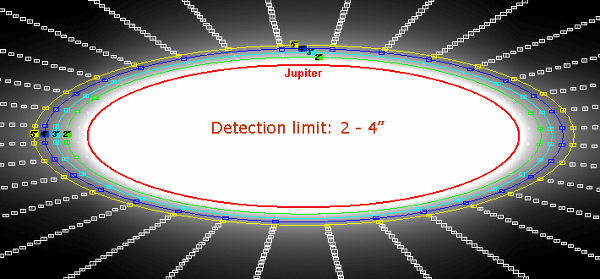EDIT: Short answers: Yes, it is possible (and increasingly more plausible!); it has not been tried with full rigor to the best of my knowledge; it is strongly expected to work, since microlensing with Jupiter has been successful for discovering, for example, exoplanets.
Indeed, Jupiter is bright, but there are systematic ways of handling this in Gaia photometry. Gaia will observe over 350,000 objects in our solar system. The vast majority are main-belt asteroids, but this includes moons of other planets, implying to accomplish this they would have to account for the brightness of the planets themselves.
EDIT: Short answer: No, not yet :)
In the specific case of microlensing with Jupiter and Gaia, the seminal paper also cited above explains quite nicely: starting from the geodesic equation, they arrive at equations 10-12 which give the deflection vector containing the usual monopole term and the relevant quadrupole terms. These are simplified in the case of "near-grazing rays as, unlike with the solar deflection, the effect is too small to be observed at large angle from the planet" into equations 13 and 14, which depend on the orientation of the spin axis of the planet (i.e., the inner products with the spin vector in the $z$ direction). In equation 13, the monopole term is the first term that is independent of $J_2$ (the dimensionless coefficient of the second zonal harmonic), and the terms that subtract from it are quadrupole terms. Equation 14 is due to quadrupole. Clearly the quadrupole terms depend on $z$, implying that this is directly due to the oblateness of Jupiter...
EDIT: .... which the oblateness ITSELF is due to the planet's rotation. In principle, a non-rotating planet would still cause light bending (b/c the Schwarzschild solution does), and a non-spherical mass distribution of the planet could cause extra light bending due to a mass-quadrupole moment of the non-sphericity, but this would be more similar to an effect of an extended body in general relativity, rather than spin, which is what is modeled in the case of Jupiter. So, specifically in the case of Jupiter, one is not wrong in saying that the oblateness directly causes more bending, but it comes with the nuance that the oblateness itself is due to the rotation: this is shown in the equations 13 and 14 above, by the quantity $J_2$ appearing everywhere there is spin. This paper explains this more technically.
